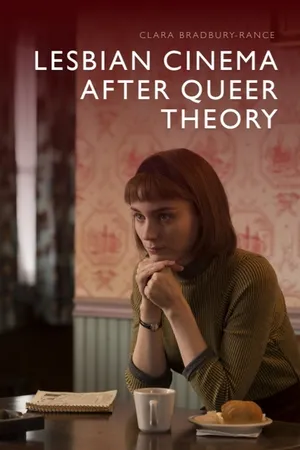
- 209 pages
- English
- PDF
- Available on iOS & Android
Lesbian Cinema after Queer Theory
About this book
Headline: A study of spectatorship, desire, identification and identity Blurb: Lesbianism has received unprecedented screen time in the first decades of the twenty-first century, departing from a prior invisibility which historically was interrupted only by invocations of pathologisation, isolation and tragedy. The lesbian's delayed and uneasy path towards visibility has coincided with queer theory's disruption of sexual identity categories, resulting in a comparable invisibility in the critical discourse that might have accounted for such significant representational transformations. In this paradoxical context, Troubling Visibility: The Queerness of Lesbian Cinema theorises the kinds of cinematic language through which desire can be given visual form. Scrutinising the conflations and obscurations induced by legitimacy when sexuality is made visible through sex, the book proposes a feminist framework for understanding the queerness of lesbianism that unsettles the "visibility imperative". Rather than charting a narrative of representational progress, shoring up the lesbian's categorisation in the newly available terms of the visible, the book reads contemporary cinema through the theories of sexuality that problematise lesbian legibility itself. Key Features: Analyses contemporary films in the context of long-standing theoretical debates and representational paradigmsIntervenes in questions of visibility, progress and identity politicsExplores lesbian cinema in the context of political, social and cultural transformations in LGBTQ+ civil rights in the twenty-first centuryProposes the mutual, rather than synonymous, use of "queer" and "lesbian" to describe sexuality on screenBrings together psychoanalysis, affect theory and theories of space and time to explore the range of ways in which contemporary cinema makes desire legible Keywords: queer theory; feminist film theory; lesbian sexuality; film and gender; film and affect; identity politics Subject: Film Studies
Frequently asked questions
- Essential is ideal for learners and professionals who enjoy exploring a wide range of subjects. Access the Essential Library with 800,000+ trusted titles and best-sellers across business, personal growth, and the humanities. Includes unlimited reading time and Standard Read Aloud voice.
- Complete: Perfect for advanced learners and researchers needing full, unrestricted access. Unlock 1.4M+ books across hundreds of subjects, including academic and specialized titles. The Complete Plan also includes advanced features like Premium Read Aloud and Research Assistant.
Please note we cannot support devices running on iOS 13 and Android 7 or earlier. Learn more about using the app.
Information
Table of contents
- Lesbian Cinema after Queer Theory
- Copyright
- Contents
- Figures
- Acknowledgements
- Preface
- Introduction: Looking after Lesbian Cinema
- 1 The Woman (Doubled): Mulholland Drive and the Figure of the Lesbian
- 2 Merely Queer: Translating Desire in Nathalie . . . and Chloe
- 3 Anywhere in the World: Circumstance, Space and the Desire for Outness
- 4 In-between Touch: Queer Potential in Water Lilies and She Monkeys
- 5 The Politics of the Image: Sex as Sexuality in Blue Is the Warmest Colour
- 6 Looking at Carol: The Drift of New Queer Pleasures
- Conclusion: The Queerness of Lesbian Cinema
- Notes
- Filmography
- Bibliography
- Index